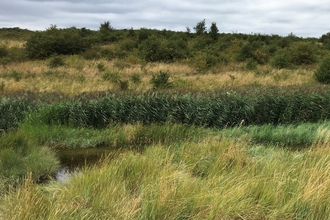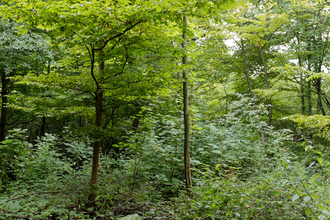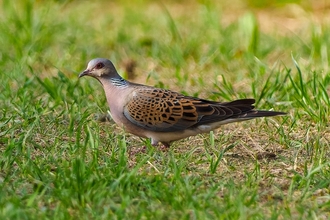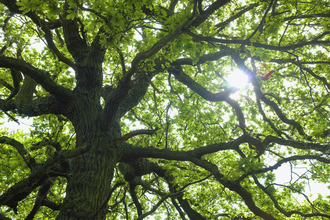Working with others
Kent Wildlife Trust works extensively with planners, developers and decision-makers to ensure development avoids damage to wildlife and wherever possible benefits the natural environment.
We are consulted on hundreds of planning applications every year, as our expertise is valued by the various local planning authorities. Unfortunately, our resources are limited, so responses are prioritised according to wildlife impacts, following our Planning and Development Management Policy (that you can download below). We only comment on wildlife issues, and leave other issues, such as landscape, to those with the relevant remit and expertise.
More about our Consultancy Services
To help direct people and give out information on planning and policy objections, we've recently created the Kent Planning Network for Nature forum. If you'd like to learn more about standing up for nature in Kent, navigating the planning system and advice on how to start your own campaign, sign up now.

Photo by Paul Hobson
Speaking up for nature
Kent Wildlife Trust engages proactively in the planning process across the County. Commenting on both Local Plans (forward strategic planning) and Development Management (planning applications) we seek to prevent negative impacts on wildlife, and particularly Local Wildlife Sites, and advocate design that benefits wildlife.
We have written some guidance to help people respond to planning applications, called 'How to make comments on a planning application', as well as some General Planning Advice. They can both be downloaded at the bottom of the page.
For more information on our current campaigns click here.
Our current campaigns
Planning FAQ
Can I respond to planning applications myself?
Yes. Find out more about local planning with our General Planning Advice guide and read our tips on how to comment on a planning application. Download our guidance documents at the bottom of this page.
What can I do if I observe wildlife being harmed during construction works?
If you observe wildlife being harmed in Kent, or any action that might lead to wildlife being harmed, you can contact Kent Police Wildlife Crime Officers and CRIMESTOPPERS who work to tackle wildlife crime in Kent. Visit the Kent Police rural crime website.
You can also visit the Country Eye website and download the free Crimestoppers Country Eye app to record and share information on a crime.
What can I do if I am concerned about an activity on a development site?
We recommend that you contact your Local Planning Authority. Try to provide them with as much information as you can about your concerns. Include the site location and any relevant planning history that you might be aware of.
What issues does Kent Wildlife Trust comment on?
Kent Wildlife Trust comments upon plans or policy that can impact upon wildlife. We cannot respond to matters that lie outside our expertise areas, such as the landscape impact (visual appearance/character), residential amenity or traffic problems.
Does Kent Wildlife Trust comment on every wildlife aspect of every development?
Kent Wildlife Trust looks to influence planning at all levels. We focus on the protection and enhancement of habitats and habitat networks of village, town, County (for example Local Wildlife Sites), national and international importance.
We receive and assess a very large number of planning proposals and policies of potential interest. We comment on applications and policies that could have the greatest impact or benefits for wildlife.
Can I read Kent Wildlife Trust comments for myself?
Yes, all our comments are submitted in writing and up-loaded onto Councils’ Applications or policy websites. They are public documents and can be referred to and copied. If you are having difficulty finding one, contact us and we’ll email or post a copy to you.
What about neighbourhood planning?
Increasingly, Kent Wildlife Trust is asked to contribute to Neighbourhood Plans. Currently, we do not have additional resources to do this. We do recognise the importance of the planning process and we are actively considering how we might be able to resource this in future. We are preparing some basic guidance on how to protect and improve your local area for wildlife through a Neighbourhood Plan.
In the meantime, please do refer to these useful links:
https://www.gov.uk/topic/planning-development/protected-sites-species http://www.forestry.gov.uk/anwpracticeguide
http://www.archnature.eu/
and please contact our advice and consultancy team if you wish to use our services to support your neighbourhood plan.
What is 'Great Crested Newt District Level Licensing'?
Great Crested Newts are a protected species, and a licence from Natural England is needed before their habitats can be destroyed or the animals disturbed. The current licensing approach involves developers trapping and relocating the species to alternative habitats, usually a newly created pond, before starting work. This has not been working, as most of the schemes consented are not robust enough to maintain populations of this species.
Seasonal restrictions are rarely planned for by developers, and these then cause delays and create uncertainty over the costs and scheduling of planned development under the current licensing approach. ‘District Level Licensing’ is designed to overcome this problem. Originally conceived as a pilot approach to test the idea, the suggestion was so popular with developers it is now national policy.
Under the new scheme, developers make a payment which covers creating or restoring ponds in areas away from the development, and their maintenance and monitoring for 25 years. The scheme in Kent is not technically ‘District Licensing’, as Natural England will still be issuing licences for individual developments, but the delivery of compensation ponds should be the same.
Kent Wildlife Trust supports the principle of a strategic level licensing scheme for Great Crested Newts that would deliver conservation gains for the species in the county. If well managed, it would be an improvement on the current system that has been failing newts for many years.
However, we still have a number of questions and concerns regarding the new scheme. While The Wildlife Trusts have worked with Natural England to secure improvements on their earlier proposals, it is still not clear whether or not it will deliver better outcomes for this species in the face of development threats.
We still await further background information on this new scheme, including Natural England’s Licensing Strategy, and will continue to work with all relevant parties to push for the best possible outcome for Great Crested Newts in Kent.




